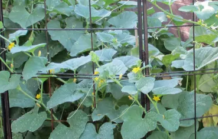Soil tests are useful tools to evaluate the pH and nutrients in the soil. A separate soil
test is needed for each area of the landscape that will be planted. For example, soil
from the lawn should be tested separately from soil in the garden.
Steps for Taking a Soil Sample:
• Identify six to ten spots within the area to be tested.
• Use a soil probe or shovel to collect soil 8-12 inches deep in each spot.
• Remove debris and combine all of the samples collected from this area in a bucket to
create a representative sample.
• Remove one pint of soil and place it in a container. A clean milk carton, resealable bag or similar container will work.
• Label the container with your name, address and information about what you
plan to grow in this area.
Your local agriculture or horticulture agent will either test the sample in the county soil
lab or send it to the K-State soil testing lab. Your agent will make recommendations
based on the results provided by the lab.
We recommend soil testing in the fall/winter before spring planting. This gives you time
to make plans for soil improvement and avoid delays from the soil test labs which tend
to be busier in spring.
Need help finding your Extension agent? Check out this map: https://www.ksre.kstate.edu/about/statewide-locations/




